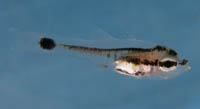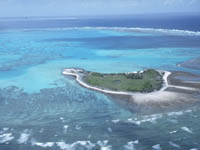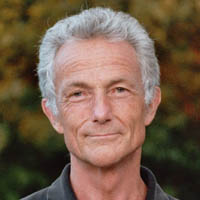 |

For further MBL News and Media Information, contact the MBL Communications Office at (508) 289-7423 or e-mail us at comm@mbl.edu
January 8, 2007
There's No Scent Like Home
New Research Shows Larval Fish Use Smell to Return to Coral Reefs
 |
|
Cardinal fish Ostorinchus doederleini
Photo Credit: Gabriele Gerlach
|
|
MBL, WOODS HOLE, MA—Tiny larval fish living among Australia’s Great Barrier Reef spend the early weeks of their lives swept up in ocean currents that can disperse them far from their places of birth. Given such a life history, one might assume that fish populations would be genetically homogeneous within the dispersal area. Yet the diversity of reef fish species is high and individual reefs contain different fish populations. For such rich biodiversity to have evolved, some form of population isolation is required... More>>>
Resources
PNAS ARTICLE #06-06777: - Smelling home can prevent dispersal of reef fish larvae by Gabriele Gerlach; Jelle Atema; Vanessa Miller-Sims, Michael J. Kingsford, and Kerry P. Black
For full text of the paper, media can contact Gina Hebert, ghebert@mbl.edu.
MBL Paper Authors:
Gabriele Gerlach, Associate Scientist
Jelle Atema, Adjunct Senior Scientist
Images:
Please click on thumbnails for high-resolution images
 |
|
 |
Cardinal fish Ostorinchus doederleini
Photo Credit: Gabriele Gerlach
|
Aerial image of the study site, One Tree Island, part of the Capricorn/Bunker group of the Great Barrier Reef, Australia.
Photo Credit: Michael Kingsford
|
 |
 |
Jelle Atema
|
Gabriele Gerlach
|
Video : MPEG format
This video shows an experimental compartment containing a damsel fish, Pomacentrus coelestis. Upon entry of foreign water from a nearby reef, the fish gets "nervous" and swims to the other side of the compartment which contains water from its home reef. The researchers repeated this experiment seven times with exactly the same result. Credit: Jelle Atema
Note: Full 18-minute video of experiment may be obtained by contacting Gina Hebert at ghebert@mbl.edu.
Funders:
National Science Foundation
National Geographic Society
Australian Research Council
|